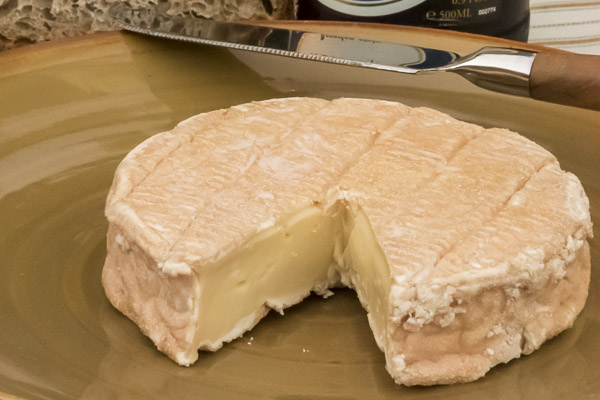I always learn so much from Pat Polowsky. This graduate student is half my age and twice as knowledgeable about cheese, especially if we’re talking chemistry. In that case, it’s more like a factor of ten. Ever wondered how salt gets to the middle of a wheel when it’s only applied to the outside? (You didn’t?) Did you think the crunch on the rind of Taleggio comes from salt? I did, but it doesn’t.
Polowsky is studying food science at the University of Vermont, and he is the creator of the Cheese Science Toolkit website. In his spare time, he works at a cheese shop because….cheese. He loves busting cheese myths and pointing out, in a nice way, the things you know that just aren’t so. I recently phoned him with some questions that were nagging me and then heard him speak at a workshop organized by the California Artisan Cheese Guild. Here are a few of my takeaways.
How well will it melt?
Pat Polowsky
If you’re making mac-and-cheese, don’t use an aged Cheddar. Young Cheddar melts better because it has more moisture and calcium. Moisture, age, fat and acidity all affect meltability, in complex ways. Moist cheeses melt better than dry ones. (You knew that.) High-acid cheeses like feta don’t melt well, but low-acid cheeses don’t, either. Indian paneer and Mexican-style queso fresco are examples of low-acid cheeses that don’t melt.
Let’s talk lactose.
Given that you’re reading Planet Cheese, you’re probably not lactose intolerant. But you may know others who are, and they probably tell you they can’t eat cheese. They are misinformed. Unless the cheese is fresh, like ricotta, mozzarella or cottage cheese, it will have little or no measurable lactose (milk sugar). Most of the lactose is converted to lactic acid within hours of culturing (I thought it took days), or it’s drained off in the whey. Severely lactose-intolerance people might want to avoid cheeses less than a couple of weeks old, but if they have trouble digesting cheese older than that, lactose is an unlikely culprit. They may have an allergy to milk proteins or some other ailment.
When does salt reach the middle?
I’ve had cheeses that were too salty or not salty enough, but I don’t recall tasting one with uneven salt penetration. Dry salt or brine gradually seasons the whole wheel through osmosis. The salt lures moisture out, then the cheese sucks the salty moisture back in until equilibrium is reached. It can take weeks or months depending on the size of the cheese, but the salt will diffuse evenly. If you’re looking for a low-salt cheese that doesn’t taste that way, choose Emmentaler, suggests Polowski. It can be as low as 1 percent salt, compared to 3 to 5 percent salt for many other types.
It's crystal clear now.
Washed-rind cheeses like Taleggio , Red Hawk and Schloss often have a crunchy surface. I always figured those were salt crystals from the brine. But no. More likely, they are struvite or ikaite crystals. You may have seen struvite on the surface of canned salmon. Everything you might want to know about cheese crystals, Polowsky’s field of study, is in this easy-to-read chart.
Cheese Class: Meet the Best Newcomers
Thursday, April 19
Trefethen Family Vineyards
1160 Oak Knoll Aveune,
Napa, CA 94558
5:30 p.m. to 7:30 p.m
Reserve >
Join me for “Best Newcomers,” a class devoted to impressive American cheeses that didn’t exist five years ago—all of them destined for glory. Some are from veteran cheesemakers, others from newcomers—but all are cheeses you need to know! If the luscious Dream Weaver (pictured here) is available, we’ll have it. My World Cheese Tour classes at Trefethen continue monthly through September. See the full schedule here.



